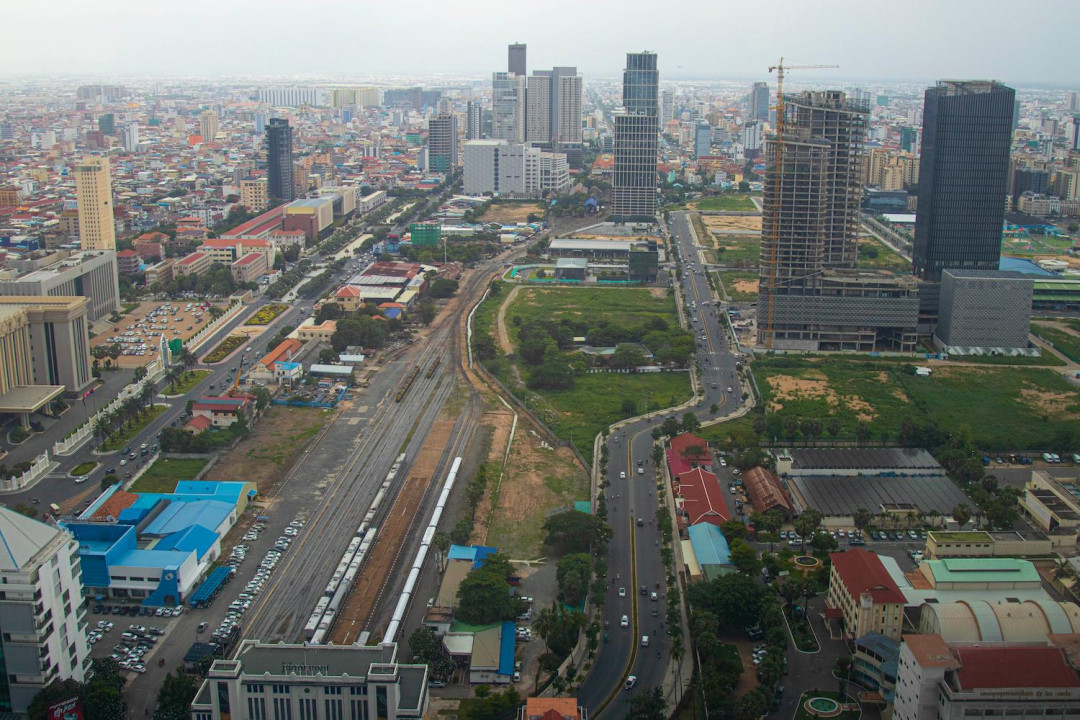World Bank Revises Cambodia’s Economic Growth Forecast for 2025 Down to 4.0%

The World Bank has revised Cambodia’s economic growth forecast downward, projecting GDP growth to slow to 4.0 per cent in 2025, and 4.5 per cent in 2026, a significant decrease from its previous estimate of 5.5 per cent.
The downgrade reflects mounting global trade uncertainties, weakening external demand, and a slowdown in key investment sectors.
According to the World Bank’s latest Cambodia Economic Update, the country’s economy is forecasted to expand by 5.3 per cent in 2024, driven by strong export performance in garments, travel goods, and footwear (GTF), primarily to the U.S. and EU. The services sector, particularly tourism, also continues its post-pandemic recovery, though international arrivals remain below pre-2019 levels.
Investment Slows Despite Rising FDI
While foreign direct investment (FDI), particularly from China, rose during the Cambodia Economic Update review period, domestic investment sharply contracted, reflecting broader economic headwinds. Furthermore, the report revealed that approved local investment under the Qualified Investment Project (QIP) scheme plummeted by 96.7 per cent year-on-year in Q1 2025.
The prolonged downturn in the property sector and tightening credit conditions have contributed significantly to the investment slowdown, posing additional risks to domestic economic activity.
Mixed Signals in Agriculture and Credit
Agriculture, which employs roughly a third of Cambodia’s workforce, recorded an increase in paddy rice production, yet its contribution to real GDP remained negligible. Structural challenges, such as climate vulnerability and commodity price volatility, continue to hinder sectoral transformation.
On the financial front, inflation edged up to 3.7 per cent year-on-year in March 2025, mainly due to rising food prices. At the same time, credit growth weakened and non-performing loans (NPLs) increased – reaching 7.9 per cent in the banking sector and 9.0 per cent in the microfinance sector – raising concerns about financial stability.
Fiscal Tightening and Public Debt Stability
On the fiscal side, government revenue rebounded, supported by higher value-added tax (VAT) collections and import excise duties. However, public spending dropped 35.2 per cent year-on-year, helping reduce the fiscal deficit to 2.7 per cent of the GDP. Public debt remained relatively low at 25.9 per cent of the GDP by the end of 2024, indicating moderate fiscal space.
Economic Outlook and Rising Risks
Looking ahead, the World Bank projects Cambodia’s economy to grow by 4.5 per cent in 2026 and 5.1 per cent in 2027. However, the outlook remains clouded by several external and domestic risks.
Externally, a global slowdown, rising protectionism, and potential restrictions on market access, especially from the U.S., pose significant threats to Cambodia’s export-led model. Domestically, high levels of private debt, increasing NPLs, and vulnerability to imported inflation, could undermine macro-financial stability and slow household income growth.
Special Focus: Strengthening Domestic Revenues
This edition of the Economic Update placed special emphasis on strengthening domestic revenue mobilisation, a key pillar of the Cambodian government’s Pentagonal Strategy.
Currently, Cambodia’s tax system is heavily skewed toward indirect taxes, such as VAT and import duties. Income tax collection remains limited, and the cost of tax compliance is high, particularly for small and medium-sized enterprises (SMEs).
The World Bank stresses the need for a more equitable and efficient tax regime, with recommendations such as: broadening personal and corporate income tax bases; enhancing VAT efficiency; increasing excise taxes on tobacco and alcohol; and simplifying compliance procedures to support business growth without compromising revenue.
_20250612_131650.jpg)